Donate now to support the LLIFLE projects.
Your support is critical to our success.
Your support is critical to our success.
= Coryphantha radians (DC.) Britton & Rose
Cactaceae (Britton & Rose) 4: 36, fig. 34. 1923 Britton & Rose
Accepted Scientific Name: Coryphantha cornifera (DC.) Lem.
Cactées 35 1868

Aulacothele radians (Coryphantha radians) Photo by: Valentino Vallicelli
REP37 (Collector: Werner Reppenhagen) Locality: Colon, Querétaro, Mexico Altitude: 2000m. This populations grows along with Heliabravoa chende, Yucca filifera, Jatropha spathulata and Agave salmiana.
REP37 (Collector: Werner Reppenhagen) Locality: Colon, Querétaro, Mexico Altitude: 2000m. This populations grows along with Heliabravoa chende, Yucca filifera, Jatropha spathulata and Agave salmiana.
Synonyms:
- Coryphantha radians (DC.) Britton & Rose
- Aulacothele radians (DC.) Monv.
- Cactus radians (DC.) Kuntze
- Mammillaria radians DC.
See all synonyms of Coryphantha cornifera
back
Accepted name in llifle Database:Coryphantha cornifera (DC.) Lem.
Cactées 35 1868
Synonymy: 31
- Coryphantha cornifera (DC.) Lem.
- Aulacothele cornifera (DC.) Monv.
- Cactus cornifer Kuntze
- Mammillaria cornifera DC.
- Coryphantha bernalensis L.Bremer
- Coryphantha cornifera var. scolymoides (Scheidw.) Borg
- Cactus scolymodes (Scheidw.) Kuntze
- Coryphantha scolymoides (Scheidw.) A.Berger
- Mammillaria cornifera f. scolymoides (Scheidw.) Schelle
- Mammillaria radians var. scolymoides (Scheidw.) Schelle
- Mammillaria scolymoides Scheidw.
- Coryphantha cornuta (Hildm. ex K.Schum.) A.Berger
- Mammillaria cornuta Hildm. ex K.Schum.
- Coryphantha daimonoceras Lem.
- Mammillaria daimonoceras Lem.
- Mammillaria radians var. daimonoceras (Lem.) K.Schum.
- Mammillaria radians f. daimonoceras (Lem.) Schelle
- Coryphantha impexicoma Lem. ex Förster
- Coryphantha radians var. impexicoma (Lem.) Backeb. & F.M.Knuth
- Mammillaria cornifera var. impexicoma (Lem.) Salm-Dyck
- Mammillaria impexicoma Lem.
- Mammillaria radians var. impexicoma (Lem.) Salm-Dyck ex K.Schum.
- Mammillaria radians f. impexicoma (Lem.) Schelle
- Coryphantha maliterrarum L.Bremer
- Coryphantha radians (DC.) Britton & Rose
- Aulacothele radians (DC.) Monv.
- Cactus radians (DC.) Kuntze
- Mammillaria radians DC.
- Coryphantha radians f. cristata hort.
- Coryphantha radians var. pectinoides (J.M.Coult.) Bravo
- Cactus radians var. pectinoides J.M.Coult.
back
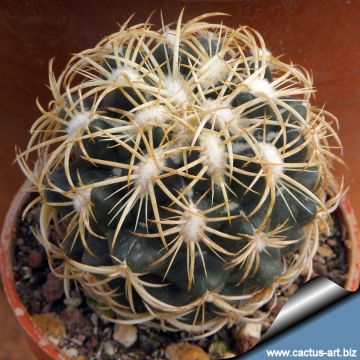
SB599 (Collector: Steven Brack) Locality: Vizarron, Queretaro, Mexico (Coryphantha radians) Photo by: Cactus Art
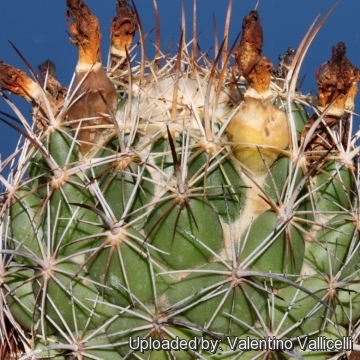
REP37 Colon, Querétaro, Mexico (Coryphantha radians) Photo by: Valentino Vallicelli
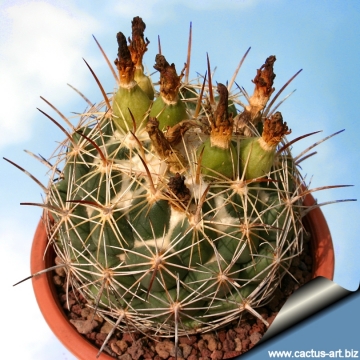
Aulacothele radians (Coryphantha radians) Photo by: Cactus Art
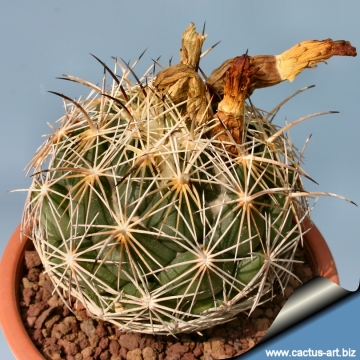
REP37 Colon, Querétaro, Mexico (Coryphantha radians) Photo by: Cactus Art
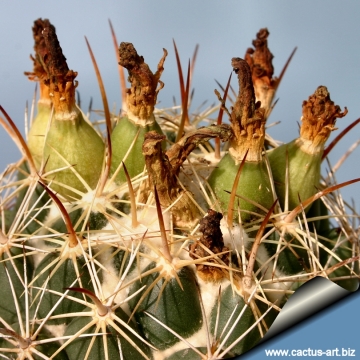
Aulacothele radians (Coryphantha radians) Photo by: Cactus Art

REP37 Colon, Querétaro, Mexico (Coryphantha radians) Photo by: Cactus Art
| Your Actions | |
|---|---|
| Back to Aulacothele index | |
| Back to Cactaceae index | |
 |
Back to Cacti Encyclopedia index |








